When Astronaut Alan Shepard Hit the Golf Shot Heard ‘Round the World
“The Moon is one big sand trap,” the astronaut said after he brought the game to a new frontier
:focal(830x685:831x686)/https://tf-cmsv2-smithsonianmag-media.s3.amazonaws.com/filer/3c/3e/3c3eba1e-967d-4c10-b479-5cdf55aaffb6/golf3.jpg)
Alan Shepard earned his place in history as the first American in space. But he may have gotten a bigger kick with one of his last acts in space 50 years ago—whacking a golf ball on the Moon.
Both events mark milestone anniversaries this year—his 15-minute Freedom 7 suborbital launch as a Mercury astronaut occurred 60 years ago this May 5. And February 6 is the golden anniversary of his famous tee off on the Moon, the final flourish of the Apollo 14 mission.
It was a brash idea and a terrible swing—the inflated pressure of the space suit made it so stiff he could only swing with one hand. And while it never really went “miles and miles and miles,” as he boasted that day, the 200-yard shot certainly went farther than it would have on Earth, with six times the gravitational pull, which is the aspect he wanted to demonstrate.
The makeshift club Shepard used in space may be the artifact that got away—the Smithsonian’s National Air and Space Museum only has a replica, donated by Shepard in 1975. The original is at the USGA Golf Museum and Libary in New Jersey, where it is one of the most popular exhibits.
Alongside Bob Jones’ putter Calamity Jane II and Ben Hogan’s 1-Iron, “I would say the Moon Club is our other most famous item,” says Victoria Nenno, senior historian at the U.S. Golf Association.
But the Moon Club replica at the Air and Space Museum is also notable, says the museum’s Apollo collection curator, Teasel Muir-Harmony. “One of the things I like about this object is that it’s a bit surprising. It’s so familiar. We don’t expect to see it on the Moon. But it helps to tell the story of the astronauts and how playful they were, and of the astronaut culture at that time,” says Muir-Harmony, author of Operation Moonglow: A Political History of Project Apollo. “It resonates with people. And it also makes clear that this was a human space flight mission, not a robotic mission.”
Also, it’s not unusual to have a replica in the Air and Space Museum, she adds. “Much of what’s gone into space has remained in space. The golf balls, for instance, remain on the Moon. We have a lot of artifacts that were used in the design of space hardware, and there are far fewer space objects that were flown in space, though we do have some.”
The USGA museum acquired the original following a personal request made by its most famous board member, Bing Crosby. Which makes for some Hollywood symmetry, since Shepard got the idea of swinging a club on the Moon from Crosby’s pal and longtime co-star Bob Hope.
On a visit to Houston’s NASA headquarters in 1970, Hope carried his ever-present driver—and used it for balance when Shepard led him to a moon gravitational display.
“That was the beginning of this idea in his mind,” Nenno says. “He also thought the golf shot would be a great opportunity to demonstrate gravitational and atmospheric differences between the Earth and the Moon, using a well understood activity that hadn’t been done before.”
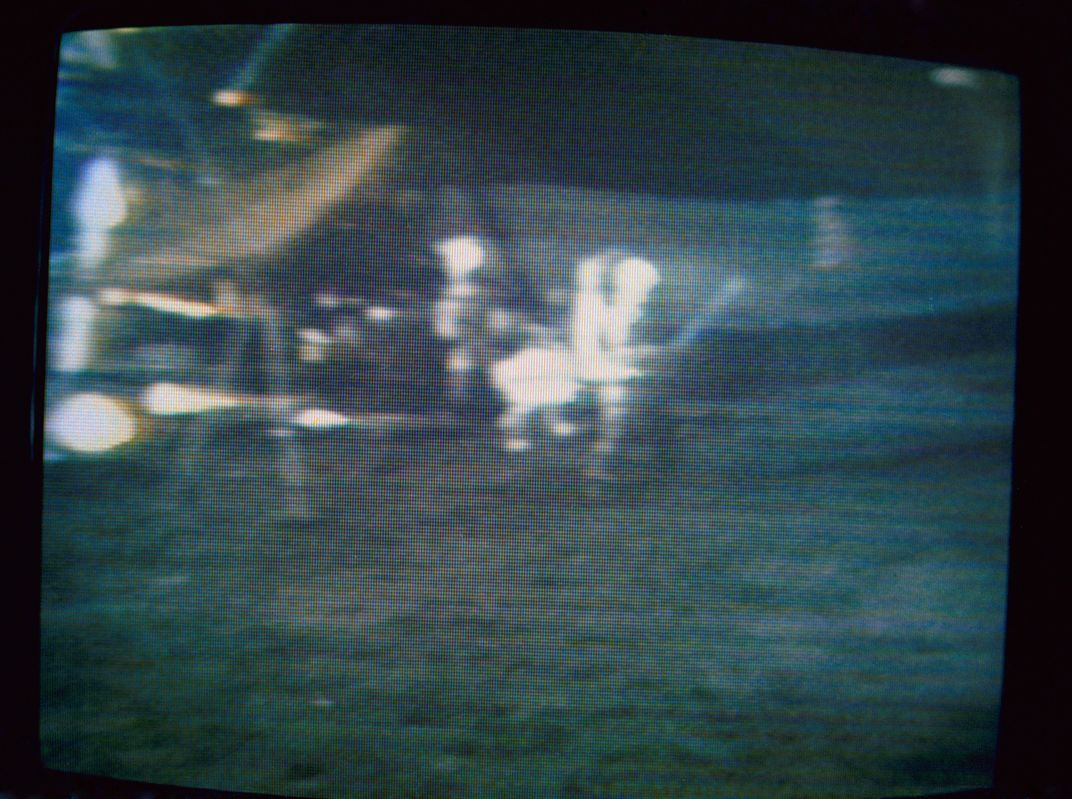
“Being a golfer, I was intrigued,” Shepard told a NASA interviewer in February, 1998, five months before he died at 74. “I thought: What a neat place to whack a golf ball.” While stories have persisted that Shepard sprung this stunt on his own—or smuggled the club head and balls to the lunar surface, he had indeed gotten permission.
It took him a while, though, to convince Manned Spaceflight Center director Bob Gilruth, who was not keen on the idea.
“Absolutely no way,” Shepard recalled the initial response.
Interest in the Apollo program among Americans had fallen since the triumph of the first Moon landing by Apollo 11 two years earlier.
“At that time, NASA was worried about the larger critique of the Apollo program,” Muir-Harmony says. “It was extraordinarily expensive, over $25 billion at the time, which was a huge percentage of the federal budget, and there was a lot of critique about the expense of the program.” They were especially worried after the Apollo 13 mission the year before that aborted its lunar landing after an oxygen tank exploded.
“NASA really had to prove that they were still capable of landing humans on the Moon. Gilruth was worried that if Shepard was golfing on the Moon, NASA would not be taken seriously,” Muir-Harmony says.
But Shepard explained he’d bring the modified Wilson Staff 6-iron club head and two balls in a tube sock “at no expense to the taxpayer.” And he promised not to even try it if anything on the mission went wrong. For that reason, he waited until the end of their lunar visit.
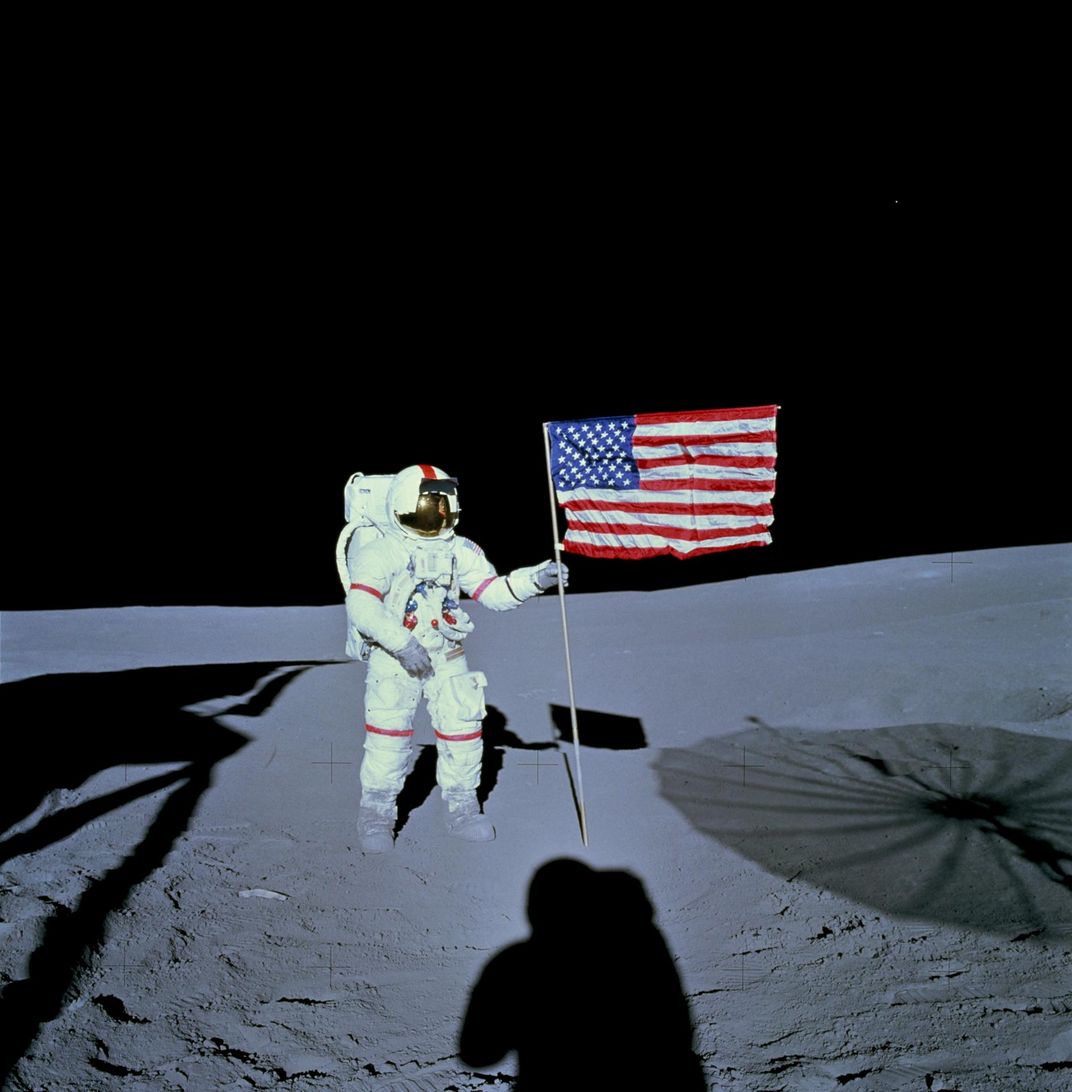
Astronauts conducted a few of their own experiments in addition to all of the official experiments they’d carry out on the Moon, Muir-Harmony says. And for Shepard—at the time the oldest man on a Moon mission at 47 and the earliest born (in 1923), golfing certainly reflected his interests.
His two, younger crew mates, though, hatched experiments more in tune with the 1970s. Command module pilot Stuart A. Roosa had an environmentally minded mission—carrying 500 tree seedlings to lunar orbit and back to see the effect once planted back on Earth (most of the nearly 50-year old Moon trees survive and thrive throughout the United States including the grounds of the White House).
More controversially, lunar module pilot Edgar Mitchell had an interest in ESP and tried to send mental pictures of symbols back to friends on Earth at specific points on the trip (he’d go on to found the Institute of Noetic Sciences to further study parapsychology once back on Earth).
So while those experiments “with trees or ESP seems much more tied to counterculture trends at the time,” Muir-Harmony says, “Golfing on the Moon fits within early astronaut culture that you saw in the film The Right Stuff.”
It also allowed Shepard to prepare for his trip by swinging the club.
“I tried to take a practice swing while I was in quarantine before the mission,” Shepard said at a press conference at the 1974 U.S. Open when he was presenting the Moon Club to the golf museum. “But you can’t grip the club with two hands when you’re wearing that suit.”
“He practiced a lot,” Nenno says. “The story is he put on his pressure suit and his oxygen tank and radios and all of the equipment and he’d practice when no one else was around, so that he felt confident he could pull off this shot.”
So when all went well with the Apollo mission, and just before re-entering the lunar module for takeoff, he pulled out his sporting gear from the tube sock where they were kept. And as a national television audience watched the live broadcast in full color (earlier flights had been in black and white), Shepard said, “Houston, you might recognize what I have in my hand as the contingency sample return; it just so happens to have a genuine 6-iron on the bottom of it. In my left hand, I have a little white pellet that’s familiar to millions of Americans.”
That would be a golf ball.
“Unfortunately, the suit is so stiff, I can’t do this with two hands,” he said, “But I’m going to try a little sand trap shot here.”
Operation Moonglow: A Political History of Project Apollo
Since July 1969, Neil Armstrong's first step on the Moon has represented the pinnacle of American space exploration and a grand scientific achievement. Yet, as Smithsonian curator Teasel Muir-Harmony argues in Operation Moonglow, its primary purpose wasn't advancing science. Rather, it was part of a political strategy to build a global coalition. Starting with President John F. Kennedy's 1961 decision to send astronauts to the Moon to promote American "freedom" over Soviet "tyranny," Project Apollo was central to American foreign relations.
He drew the makeshift club back and hit a bull that sputtered into a nearby crater.
“You got more dirt than ball,” Mitchell teased.
“That looked like a slice to me, Al,” capsule communicator Fred Haise added from Houston.
“The Moon is one big sand trap and the dust is very fine,” Shepard explained in 1974.
But the third swing connected. With the Moon’s one-sixth gravity, and no atmosphere, there was no drag, hook or slice. Still, it went only about 200 yards—not the miles and miles he exclaimed at the time. “You know how golfers are,” Shepard said in ’74.
Still, it’s what most people remember about Apollo 14, half a century later. “I think there was a benefit in trying to engage the general public in the mission and capture their attention,” Muir-Harmony says.
“Golf was brought to an entirely new frontier,” says Nenno, “and now it’s forever entwined with the history of space exploration and scientific exploration.”
A Note to our Readers
Smithsonian magazine participates in affiliate link advertising programs. If you purchase an item through these links, we receive a commission.
/https://tf-cmsv2-smithsonianmag-media.s3.amazonaws.com/accounts/headshot/RogerCatlin_thumbnail.png)
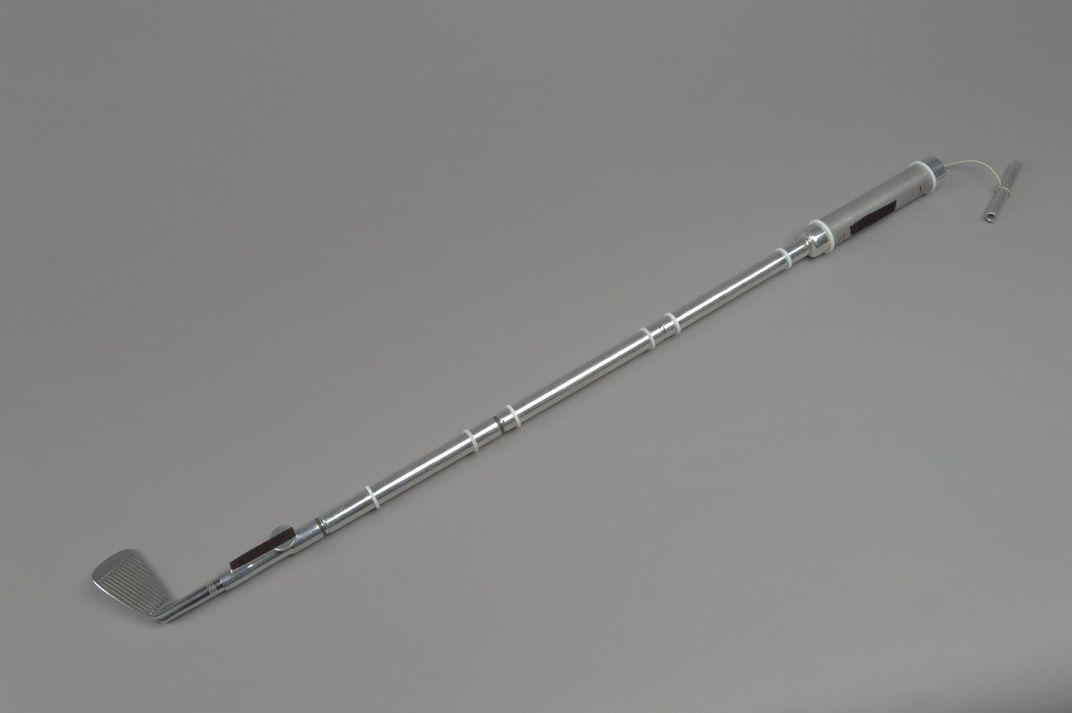
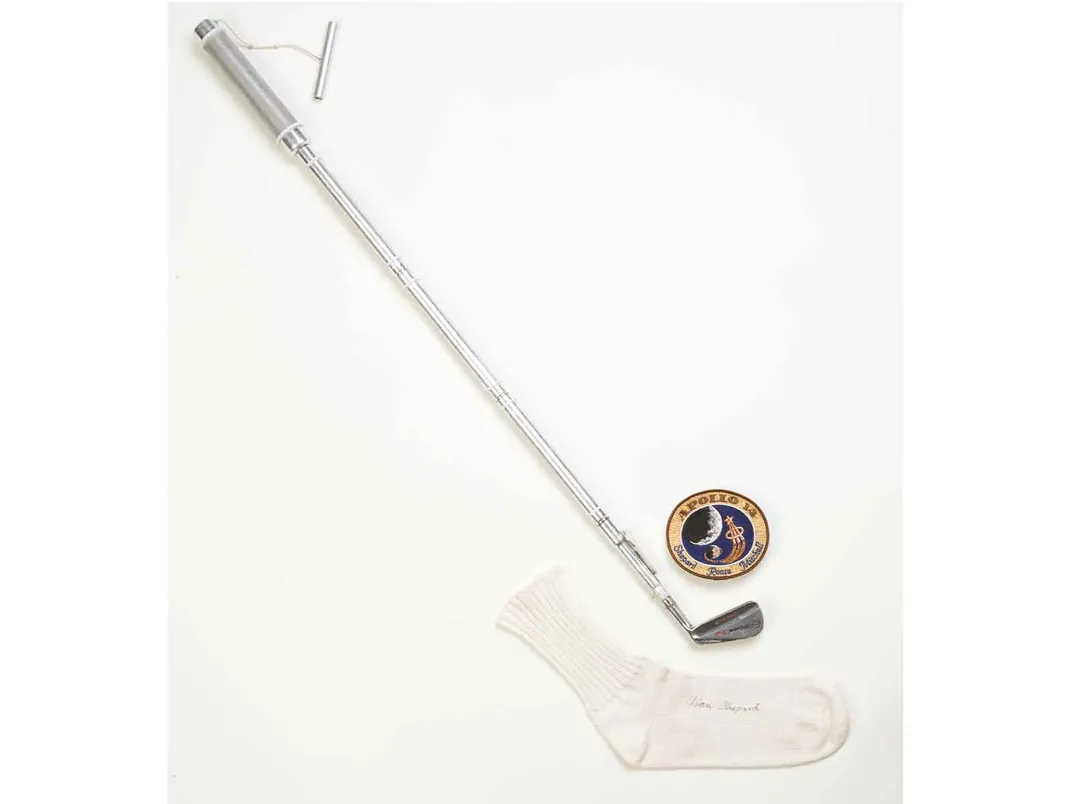


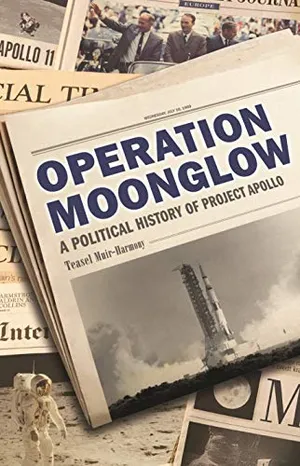
/https://tf-cmsv2-smithsonianmag-media.s3.amazonaws.com/accounts/headshot/RogerCatlin_thumbnail.png)